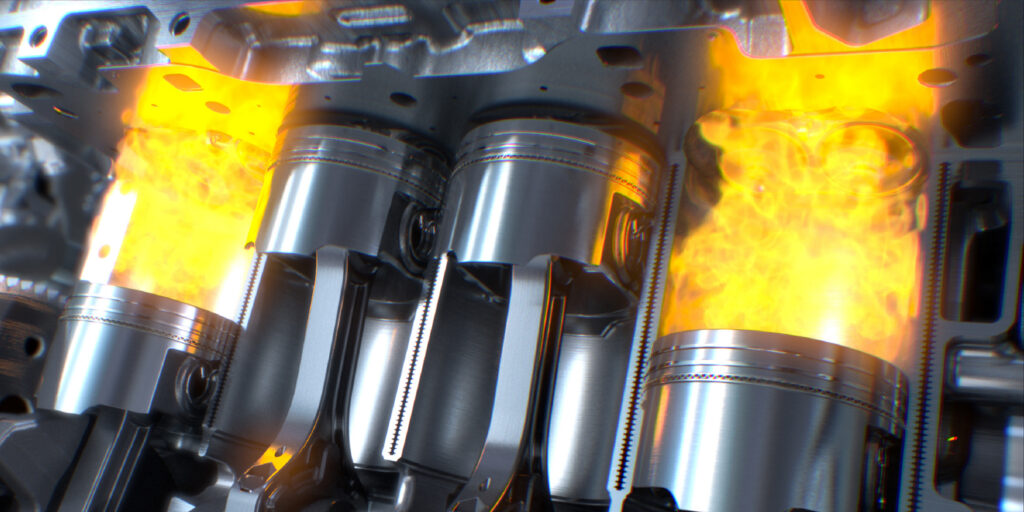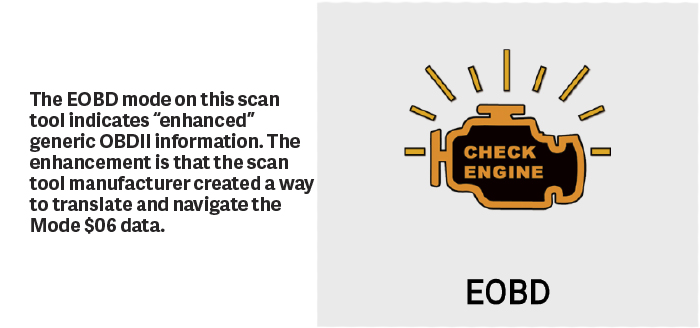A flashing check engine light and codes P0301 to P0308 are a surefire indication that one or more cylinders are misfiring. These are the easy problems to solve when it comes to misfire diagnostics. However, some misfires are more challenging to uncover and resolve due to their intermittent nature.
Misfires are detected using crankshaft speed and piston position. The crankshaft position sensor is the key component in determining a misfire. The engine control module calculates the time between the edges of the crankshaft reluctor wheel teeth by receiving a signal from the crankshaft position sensor. The crankshaft rotational velocity and acceleration are compared in the event of a power loss from a cylinder.
The misfire monitor runs only when the conditions are right. For example, if the engine is in open-loop operation, it might not run the misfire monitor. Some more sophisticated powertrains might even suspend the misfire monitor if the transmission torque converter is about to lock. Some might turn it off when the A/C clutch is engaged.
A single misfire event is tracked by the engine control module. The misfires are then counted during a drive cycle. The counter might reset after a specific number of revolutions of the crankshaft. To set a misfire code, the number of misfires for a cylinder must exceed the value for the drive cycle. If the misfire occurs only under specific engine loads or speed, it is possible not to set a cylinder-specific misfire code during a drive cycle. This is where Mode $06 data can help you resolve the misfire and pinpoint a specific cylinder.
The misfire monitor also looks at the total number of misfires from all the cylinders. If the total number of misfires exceeds a set value, it might take measures to limit damage to the catalytic converters by adjusting timing and altering the fuel trims.about:blank
Generic, Global and Enhanced
When OBDII was being standardized, it did two things. First, it allowed automakers to update emissions calibrations in the field. Second, it provided a way for emissions regulators to test the emissions and confirm that a vehicle is performing as it should.
These emissions protocols are called monitors. There are monitors for just about every emissions-related sensor or system on the vehicle. Mode $06 is where this information for the monitors resides.
The “$” before a mode or test is a hexadecimal code. A $ tells the processor to start assembling data depending on the sequence after it. The data or value is then assigned to this code. As part of the data in the engine management software, there are ranges and limits for a monitor.
Most monitors are pass or fail. Continuous monitors run all the time. Non-continuous monitors test when the conditions are optimal, like when the engine is at a specific coolant temperature, or the throttle is at a set angle.
Some factory scan tools can access the raw Mode $06 data. It is then up to the technician to decode the information using a table of codes organized by modes, tests and components.
In Mode $06, you will have a Test ID or TID. Later vehicles will use the term Monitor ID or MID listed in the service information. The following sequence is the Component ID or CID. This code can indicate a specific cylinder test. The calibrations for a vehicle will be the limits of the test and components of the CID. On some vehicles, decoding the hexadecimal numbers can be very valuable if your tool lacks coverage for a specific make.
Some aftermarket scan tools can access Mode $06 with enhanced OBD, global or generic modes. These modes can take the hexadecimal data from the monitors in Mode $06 and translate them into misfire counts and monitor information.
What are you looking for? First, a misfire count for a specific cylinder needs to be compared to the other cylinders. If one or more cylinders have a high number of misfire events, that is the cylinder you should investigate. By knowing the specific cylinder, you can focus your tests on the ignition coil, fuel injector or mechanical components. You also can try other scan tool tests like power balance of the deactivation of an injector or ignition coil.
















